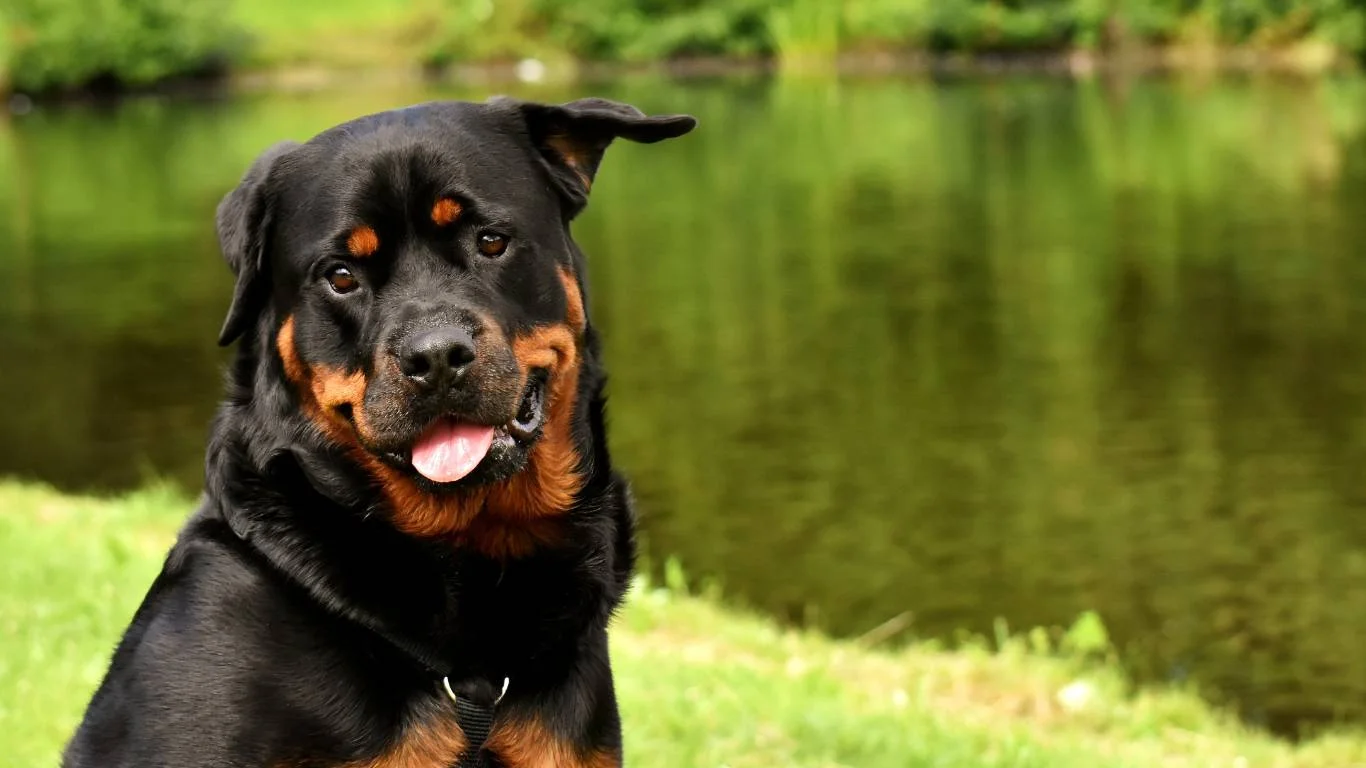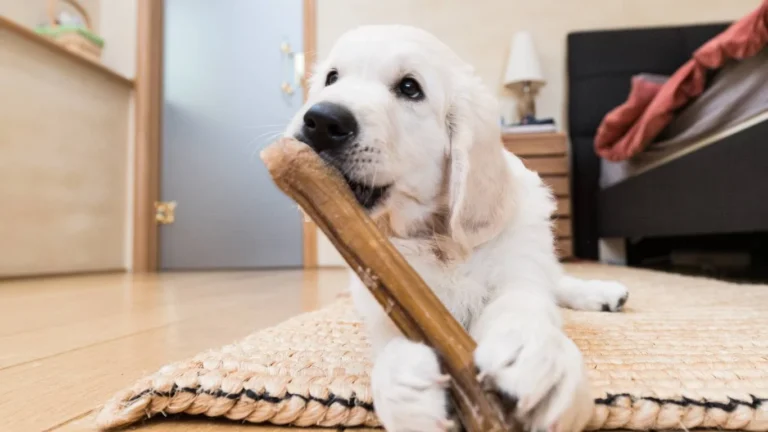How to Reduce Tartar Buildup in Dogs Naturally Without Stress
You wouldn’t believe how many dog parents ask me about bad breath and those yellowish-brown gunky teeth during routine visits. I totally get it—nobody wants kisses that smell like a sewer. As a Veterinary Assistant with a special focus on nutrition, I’ve seen firsthand how much a dog’s diet and daily habits can affect their dental health. So let’s talk about the real deal on how to reduce tartar buildup in dogs naturally, without turning to expensive dental procedures unless absolutely necessary. Yes, it’s possible—I’ve done it with my own dogs and helped many clients do the same.
Why Tartar Buildup is More Than Just a Cosmetic Issue

Tartar might look like a minor annoyance, but it’s actually a huge red flag for your dog’s overall health. That yellow or brown crusty stuff on your pup’s teeth? It’s hardened plaque, loaded with bacteria. Over time, it can sneak below the gum line and cause gum disease, infections, and even mess with their organs. I once treated a senior Yorkie with severe kidney issues—and a vet on our team suspected years of untreated periodontal disease played a role. Scary, right?
How to Reduce Tartar Buildup in Dogs Naturally with Smart Food Choices

Nutrition plays a massive role in dental health. You know that old saying, “You are what you eat”? Well, it’s totally true for dogs too. When I started paying more attention to the ingredients in my own dog’s food, I noticed a huge difference—not just in her coat and energy but her breath and teeth too.
1. Ditch the Kibble-Only Diet
Contrary to what a lot of folks believe, dry kibble doesn’t really “clean” teeth. Some brands even contain sugar or starchy fillers that contribute to plaque. I always suggest rotating in fresh, raw, or gently cooked foods—especially ones with natural chewing resistance.
- Raw meaty bones: Nature’s toothbrush! Just make sure they’re appropriate for your dog’s size and always raw, never cooked.
- Crunchy veggies: Carrots, celery, and cucumber slices can help scrub teeth gently while adding fiber and nutrients.
- Fresh herbs: Parsley isn’t just a garnish—it can help freshen breath and fight bacteria.
2. Say Yes to Dental-Supporting Supplements
Some dogs aren’t big chewers—and that’s okay. You can still support their oral health with natural supplements. Here are a few I personally swear by and often recommend to clients:
- Kelp powder: This seaweed superstar helps reduce plaque and tartar by softening it from within.
- Coconut oil: A small dab on a toothbrush or finger brush has both antibacterial and breath-freshening benefits.
- Probiotics: A balanced gut microbiome supports better oral health—yep, it’s all connected!
Building an At-Home Dental Routine That Actually Works

I won’t lie—brushing a dog’s teeth isn’t always a walk in the park. Some dogs hate it, some tolerate it, and a rare few enjoy the attention. But consistency is everything. One of my clients, a beagle named Max, went from hating the brush to wagging his tail every time he saw it. It took time and positive reinforcement, but it totally paid off.
3. Choose the Right Tools
Forget human toothpaste (seriously, it’s toxic for dogs). Instead, go for natural, dog-safe formulas—some even have enzymes that break down plaque. I love finger brushes for beginners; they give you more control and feel less invasive for the dog.
4. Make It a Game, Not a Chore
Turn brushing time into bonding time. Use treats, praise, and make it part of your daily routine—right after walks or before bed. Keep sessions short and sweet at first. Over time, it becomes second nature for both of you.
In the next section, I’ll dig deeper into natural chew alternatives, DIY dental sprays, and which holistic vet-approved products are actually worth the hype. But even with just these changes, you’re already setting your pup up for healthier teeth—and a whole lot more kisses.
Natural Chews That Actually Help Reduce Tartar

Let’s be real—dogs love to chew. It’s in their DNA. And as a vet assistant, I’ve learned to lean into that instinct instead of fighting it. If you pick the right kind of chew, it becomes a fun activity and a natural way to tackle tartar buildup. It’s like letting your dog brush their own teeth… without the drama.
1. Raw Bones (The Right Way)
We talked a little about this earlier, but let me emphasize: raw, meaty bones can be a game-changer. I had a Labrador client named Diesel—his teeth were looking rough until we introduced raw turkey necks twice a week. Within a couple months, his vet noted significant tartar reduction. Just avoid weight-bearing bones from large animals like beef leg bones—they can crack teeth.
2. Natural Dental Chews
There are a ton of dental chews on the market, but not all are created equal. Some are basically glorified candy bars. I always recommend reading the ingredients—if it looks like a science experiment, skip it. Instead, try:
- Dried beef tendons: Great texture for scraping tartar and they’re 100% natural.
- Fish skin twists: High in omega-3s, low in fat, and dogs go bonkers for them.
- Dehydrated rabbit ears: Weird? A little. But dogs love the crunch, and they’re great for dental cleaning.
3. Dental Toys With a Purpose
I’m obsessed with those rubber toys that you can smear with dog-safe peanut butter or coconut oil. Not only do they keep dogs occupied, but they massage gums and help break down soft tartar. One tip: pop them in the freezer with a smear of plain Greek yogurt inside. Keeps ‘em cool and chewing for ages.
DIY Natural Dental Sprays and Rinses

Sometimes, brushing just isn’t happening (I feel you, multi-dog households). That’s where dental sprays and rinses come in handy. I’ve made a few simple versions at home that clients now swear by. They’re easy, cost-effective, and most importantly—they work.
1. Apple Cider Vinegar Rinse
I mix one part organic apple cider vinegar with two parts filtered water and use it as a quick oral rinse or spray. The vinegar helps balance pH levels in the mouth, which can reduce plaque-forming bacteria. Just don’t overdo it—too much acidity isn’t good either. A little goes a long way.
2. Coconut Oil and Peppermint Blend
Here’s my go-to trick: melt a tablespoon of coconut oil and add one drop (just one!) of food-grade peppermint oil. Dip a finger brush into it and do a quick once-over. It freshens breath like magic and helps fight bacteria naturally. My dachshund, Willow, literally licks the brush clean.
Other Natural Methods to Support Oral Health

There’s more to healthy teeth than just brushing and chewing. As someone who’s worked closely with holistic vets and nutrition-forward clinics, I’ve learned that the whole-body approach makes a real difference. Here’s what else I recommend keeping in mind:
1. Keep Hydration Up
Water helps flush out food particles and bacteria, so make sure your pup has constant access to clean, fresh water. I even add a splash of bone broth to encourage picky drinkers. Hydration is such a simple but overlooked step when you’re figuring out how to reduce tartar buildup in dogs naturally.
2. Avoid High-Starch Treats
A lot of commercial treats—especially those “bacon-flavored dental bones”—are full of potato, corn, or rice. These break down into sugars, which feed mouth bacteria and lead to plaque. I stick to freeze-dried meat, liver bites, or homemade biscuits made with coconut flour or pumpkin.
3. Watch for Early Warning Signs
A little yellowing on the teeth isn’t always urgent, but if your dog has consistently bad breath, swollen gums, or hesitates to chew their food—get it checked. I’ve seen so many dogs bounce back with a combination of vet treatment and natural maintenance. The earlier you catch it, the easier it is to manage naturally.
Next up, I’ll be diving into professional support options (when to seek a vet cleaning), plus how to maintain long-term oral health once the tartar is under control. But with everything we’ve covered so far, you’re already way ahead of the game. Keep it up, your dog’s smile is worth it!
When Natural Isn’t Enough: Knowing When to See the Vet

Look, I’m all about natural methods (obviously)—but I also know when to call in backup. As a Veterinary Assistant, I’ve seen many cases where tartar is just too far gone for DIY solutions. And that’s okay. Sometimes your pup needs a fresh start with a professional dental cleaning.
If your dog’s gums are bleeding, breath smells like rotten fish 24/7, or you see loose or broken teeth, it’s time to book that vet appointment. One golden retriever I worked with, named Sadie, had been on a great natural routine—but she still needed a deep clean under anesthesia to get under the gum line. After that, her home care really worked wonders.
Signs You Might Need a Professional Dental Cleaning:
- Thick, dark brown tartar you can’t scrape off with your nail
- Red, swollen, or bleeding gums
- Persistent pawing at the mouth or food refusal
- Loose or wiggly teeth (not normal, even in older dogs!)
- Discharge from the mouth or facial swelling
A professional cleaning gets your dog back to zero—and then your natural routine helps keep things clean long-term. Think of it like pressure-washing your deck before applying the sealant.
Long-Term Maintenance: Keeping That Smile Sparkling

So you’ve put in the work—adjusted the diet, added some good chews, maybe even braved tooth brushing a few times a week. Now it’s about maintaining those pearly whites. The cool part? Once tartar is under control, upkeep gets a lot easier. Consistency is key.
1. Set a Weekly Routine (And Stick With It)
Pick 2–3 days a week for brushing or using a natural dental spray, offer a chew every few days, and rotate in fresh produce or raw meaty bones once or twice a week. That’s literally all it takes. I tell my clients to think of it like meal prepping—it’s a little bit of effort up front, and saves you hundreds in vet bills later.
2. Annual Dental Checks
Even if your dog seems fine, get those teeth looked at once a year. Most clinics offer oral exams as part of wellness visits. I’ve caught early-stage gum issues this way in so many dogs, just by doing a quick lift-the-lip check.
3. Keep Up the Healthy Treat Game
It’s easy to slip back into processed treats once your dog’s teeth are looking good. Don’t! Keep those healthy chews in the mix. Freeze-dried liver, dehydrated rabbit ears, and low-carb homemade biscuits are your best friends.
Helpful Resources & Where to Learn More
I always encourage pet parents to dig deeper and ask questions—especially when it comes to holistic care. Here are a few trusted sites that provide solid info on dental health and natural pet care:
- American Veterinary Medical Association (AVMA)
- American College of Veterinary Dentistry
- Whole Dog Journal
- Natural Pet Care Resources
These sites dive deeper into nutrition, safe supplements, and vet-backed protocols for how to reduce tartar buildup in dogs naturally. It’s always a good idea to cross-reference what you read online and talk to your vet—especially when trying something new.
Final Thoughts From the Vet Assistant’s Corner
At the end of the day, dental care isn’t a one-time fix—it’s a lifestyle. But it doesn’t have to be complicated or expensive. I’ve helped dozens of dog parents create simple routines that actually work (and don’t drive their pups nuts in the process). A little consistency, some smart choices, and a dash of patience go a long way.
Remember, every dog is different. What works for a Boston Terrier might not fly with a Rottie. The key is to start small, stay observant, and adjust along the way. Your dog will thank you—not just with fresher breath, but with better health from head to tail.
Disclaimer
This article is based on my personal experience as a Veterinary Assistant with a nutrition focus, and is intended for informational purposes only. It does not replace veterinary advice. Always consult your veterinarian before making major changes to your dog’s diet, routine, or health care plan.




